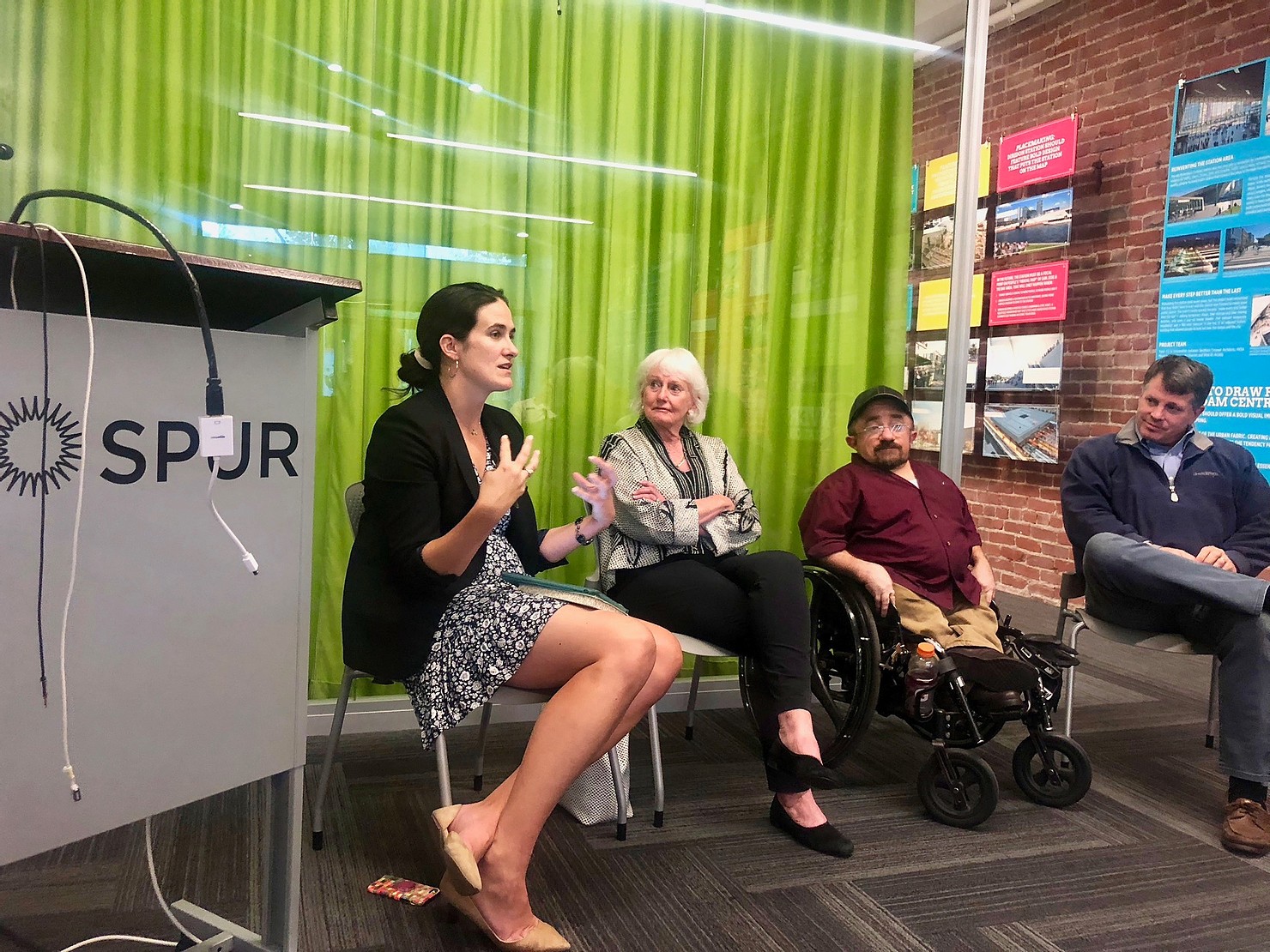This summer, The Kelsey collaborated with the San Francisco Bay Area Planning and Urban Research Association, SPUR, on a three part series about inclusivity and cities. A nonprofit organization, SPUR seeks to bring together people from all ends of the political spectrum to come together and tackle the most pressing issues facing the Bay Area including housing, transportation, and sustainability. SPUR’s agenda for housing includes investing in permanently affordable housing and enabling more housing to be affordable by design, making them a great partner for our work in developing inclusive communities and subsequently creating more resilient, connected, and sustainable cities. Plus, we’re always working to make sure inclusion is on the agenda of everyone thinking about housing and urban development.
Our first event in the series was walking tour in June in San Francisco, led by one of our board members, Liz Grisgby, who is the Consumer Advocate for the Golden Gate Regional Center. Liz led the group around downtown San Francisco while discussing challenges and opportunities to make San Francisco a more inclusive city. Our second event, in August, was a panel in Oakland on universal design and its applicability to inclusive communities. We learned about how universal, accessible design is just good design, and better for all people and places. Our third event, an evening panel in San Jose just last week, brought in panelists to discuss the meaning of inclusive community and specific measures we can take to foster more inclusion in community development. Kathryn Exon Smith, a Program Assistant at SPUR San Jose, recalled:
“The discussion at SPUR San Jose was enlightening and candid, acknowledging some of the challenges that are before us in making communities more inclusive on every front, with the current shortage of affordable housing only amplifying an already complex issue. It was also hopeful, and energizing to be in a room full of people who envision scaling up the great work the Kelsey is leading so everyone can live in a space that works for them.”
We learned alot from discussions with panelists and attendees, but our overarching takeaway from the series was that making communities inclusive is something cities and projects should design for from the start because it makes places better for all people of all abilities, backgrounds, ages, and incomes. When our communities are more inclusive, we’re also more resilient, more connected, more innovative, more sustainable, and more joyful. We’ve also learned that goals surrounding inclusivity are compatible with and often overlap with other urban goals like sustainability, diversity, affordability, transportation, and innovation. To achieve inclusion goals, we need investment on all levels. It takes the private sector to understand where inclusion has market value and subsequently fund that work. It requires the public sector to provide frameworks, goals, and subsidies to meet inclusion targets, particularly for individuals with lower incomes in challenging markets and for communities with higher needs. The nonprofit sector must play a crucial role in piloting new models, advancing advocacy agendas, and aligning the right partners across sectors to make inclusion a reality.
Our vision for an inclusive city is one where all people have access to housing, services, and community. It’s a place where people with a range of incomes — from those who can afford a luxury apartment to those with SSI as their sole source of income — can afford to live without segregation. It’s a place that’s physically accessible, with natural and specialized supports, where all people can thrive. It’s a place where all people people connect and create, play and learn, build and support, and live life together.
So, what can you do to make your community more inclusive, wherever you are?
ADVOCATE: Join your local YIMBY (Yes In My BackYard) chapter and advocate for more housing in your community. More housing–for people of all incomes, abilities, and backgrounds–means more inclusion.
INCLUDE: Many of us have friends of different ages and in different careers, but how many of us have friends with different abilities and incomes than our own? Inclusive cities start with inclusive communities of friends, families, and coworkers.
SPEAK UP: People with disabilities shouldn’t be the only ones speaking up when something is inaccessible or exclusive. If you see something, point out the barriers and work to create new solutions. Your voice matters!
Thanks to SPUR for thinking about inclusion in cities with us, we are excited to work with you on inclusion and community development moving forward.
